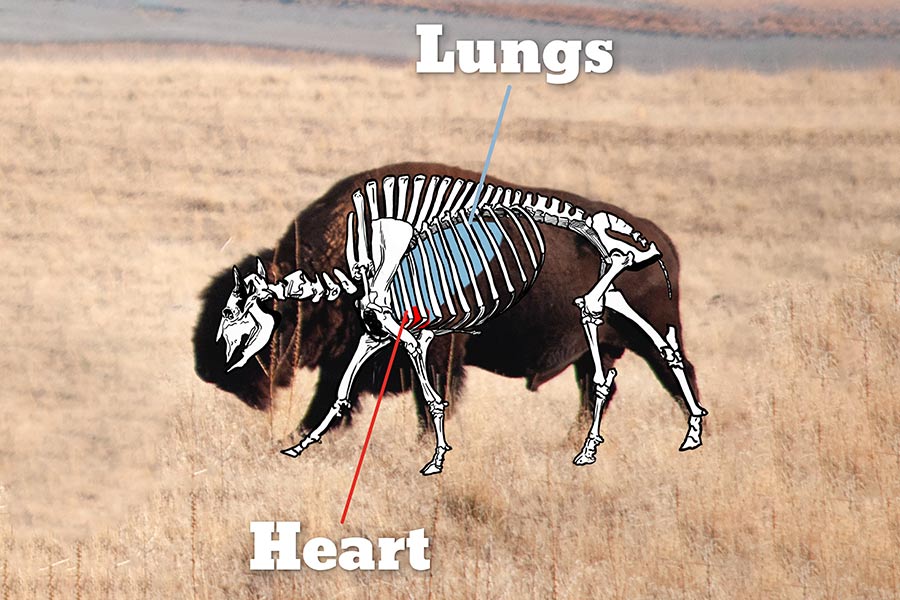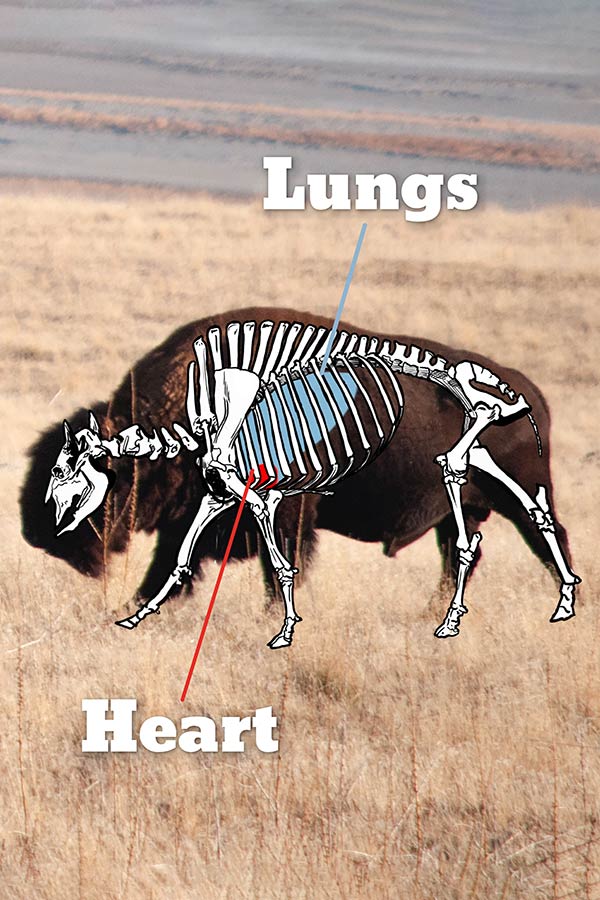Bison hunting
Shot placement options and hunting tips
Bison are some of the biggest, toughest animals in North America. If you've drawn a permit to hunt one, it's important to know about effective shot placement. Making a clean, lethal shot — on your first attempt — is preferable to dealing with a wounded bison or trying to find one that's run off with the herd.
The following shot-placement tips can help you have a successful bison hunt:
- Look for a bison that's separated from the herd. You don't want to inadvertently hit more than one animal.
- Try to get as close to the bison as possible before taking your shot. If you can get within 100 yards of the animal, you will be in a better position to shoot.
- Confirm that the bison is one your permit allows you to shoot (e.g., hunter's choice or cow only).
- Don't rush your shot or shoot at a running bison. Find a solid rest for your gun before lining up the shot.
- Aim for the heart/lung area, which is slightly above and behind the bison's front leg. It gives you the best chance at a clean kill because the organs are large and easier to hit. (The photo illustrates where the heart and lungs are positioned within a bison.) The most common mistake in shot placement is shooting above the heart or lungs. Don't aim too high. In comparison to other big game animals, that area is much larger on a bison and results in an increased likelihood of wounding loss.
- If that shot isn't possible, you could try for a shot in the neck vertebrae. It is a more difficult shot because a bison's neck is short and thick. Aim approximately 6 inches straight back from the base of the animal's horn.
- If you wound the bison and it rejoins the herd, do not start shooting immediately. If you do, you run the risk of hitting and killing multiple animals, which is illegal. Bison are very tough, and it may take the animal some time to drop. Wait to shoot again until there's no chance of hitting another animal.
As you can see from the tips above, if you take time at the front end of your hunt — by finding a solitary animal and getting as close as possible — your odds of a successful first shot increase dramatically. Be patient, aim carefully and have a safe, ethical hunt!









